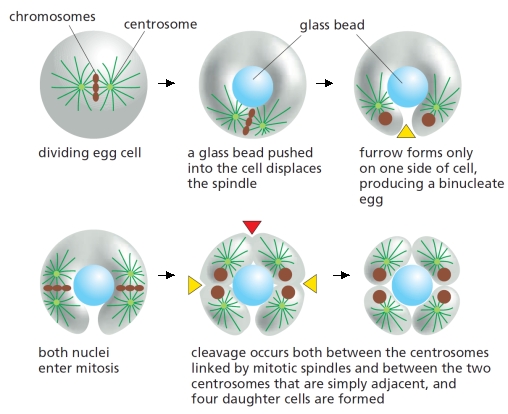Three models for contractile-ring positioning in animal cells are presented in the schematic diagrams below. Answer the following question(s) according to these models.

-In classic experiments carried out in the 1960s and schematized below, an egg of the sand dollar Echinarachnius parma was made into a torus shape using a glass bead on the end of a needle, to study the influence of microtubules on cleavage-furrow positioning. The cells were allowed to undergo two rounds of mitosis. After the second mitosis, an extra furrow (indicated by a red arrowhead) was observed between the two asters that did not have a spindle between them. Which of the models (1 to 3) is more consistent with this observation? Write down 1, 2, or 3 as your answer.

Definitions:
Q9: The membrane potential in a particular hyperpolarized
Q10: Indicate true (T) and false (F) statements
Q16: Which message is NOT synonymous with MyPlate?<br>A)
Q17: Which mammalian blood cell type undergoes the
Q18: Two approaches have been devised to deal
Q25: Macaroni and cheese is an example of
Q33: Consider two organisms, one with a much
Q47: Cells can adapt to extracellular signal molecules
Q48: Indicate true (T) and false (F) statements
Q58: A cross section of a developing spinal